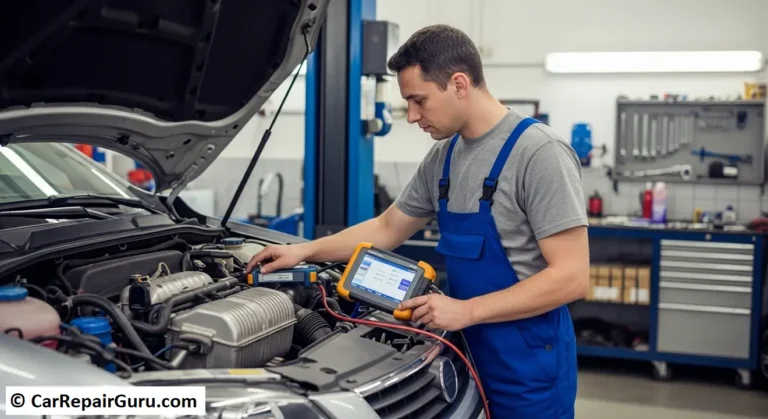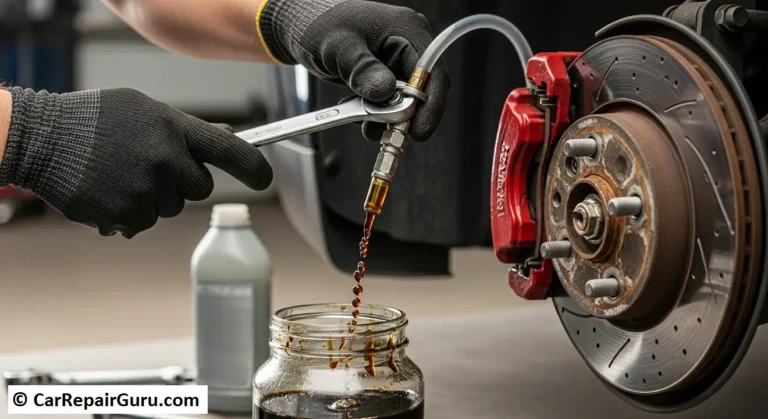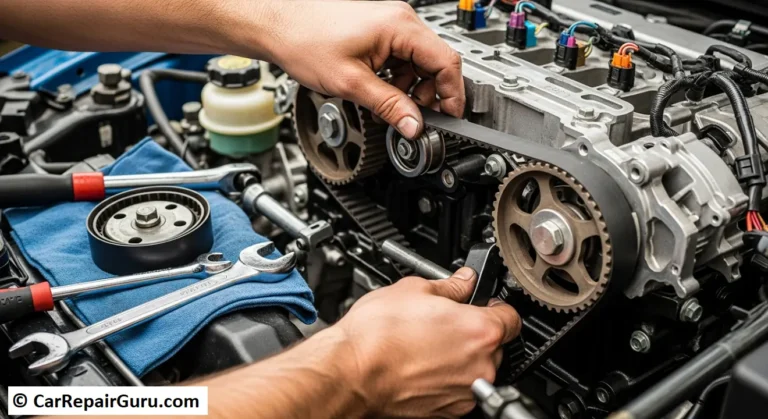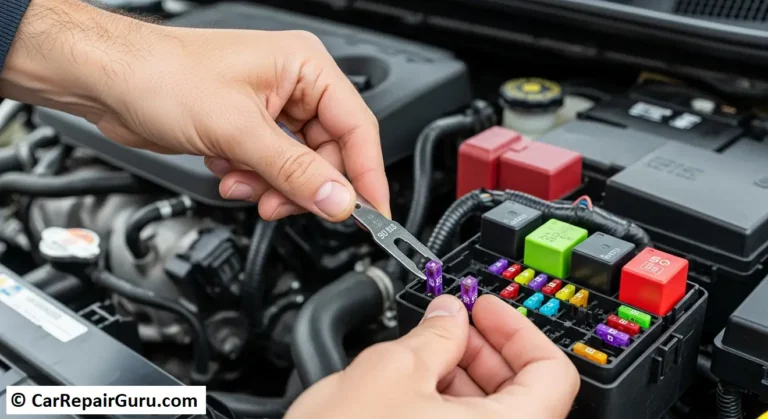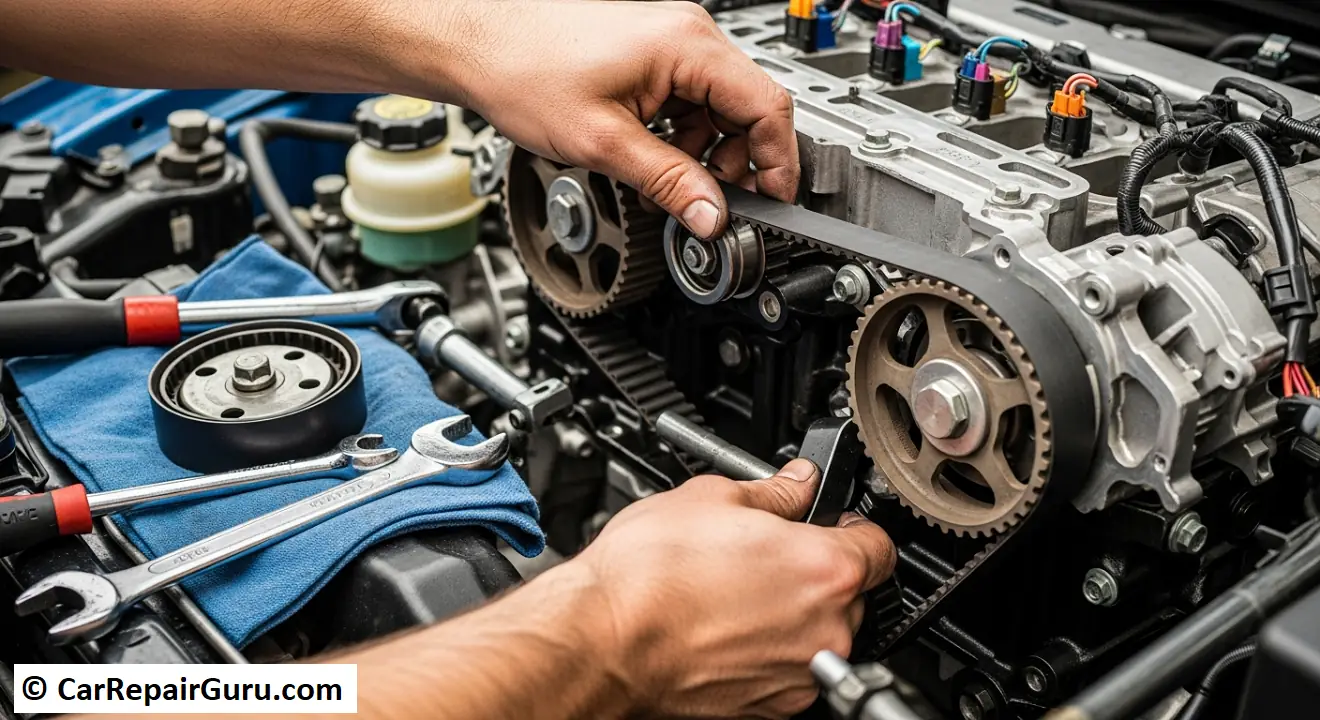
In the complex world under your car’s hood, there are a few parts that are absolutely, non-negotiably critical. The timing belt is one of them. Think of it as the unsung hero of your engine—working silently and tirelessly, until it doesn’t. Ignoring this crucial component can lead to catastrophic, wallet-draining engine damage.
But how do you know when it’s time? This guide will walk you through everything you need to understand about when to replace your timing belt, from the manufacturer’s schedule to the subtle warning signs your car might be giving you right now. We’ll cover the costs involved and explain why this is one maintenance job you simply can’t afford to skip.
What is a Timing Belt and Why is it So Important?
Simply put, a timing belt is a ribbed, reinforced rubber belt that synchronizes the rotation of your engine’s crankshaft and camshafts. Think of it as the bicycle chain for your engine. This precise synchronization ensures that the engine’s valves open and close at the exact right time in relation to the pistons.
When this timing is perfect, your engine runs smoothly and efficiently. When it’s off by even a single “tooth” on the belt, performance suffers. If the belt breaks entirely, the consequences can be disastrous. This is where a critical distinction comes into play: the type of engine your car has.
The Critical Difference – Interference vs. Non-Interference Engines
Understanding which type of engine you have is key to understanding the urgency of a timing belt replacement.
Interference Engine (High Risk)
This is the most common engine design in modern cars. In an interference engine, the valves and pistons occupy the same space in the cylinder, just at different times. If the timing belt breaks, the camshafts stop turning, leaving some valves open. The crankshaft, however, continues to spin for a few more rotations, causing the pistons to slam violently into the open valves. This results in bent valves, damaged pistons, and potentially a ruined cylinder head—an engine-destroying event that can cost thousands to repair.
Non-Interference Engine (Lower Risk)
In this design, there is enough clearance that the pistons and valves will never touch, even if the timing is lost. If the timing belt snaps on a non-interference engine, the engine will simply shut off. While you’ll still be stranded and need a tow plus a new timing belt, you’ll likely avoid the catastrophic internal damage seen in interference engines.
Not sure which you have? Your owner’s manual or a quick online search can tell you. But it’s safest to assume the worst and treat your timing belt maintenance as if you have an interference engine.
The #1 Rule – Check Your Manufacturer’s Recommended Interval

So, when should you replace your timing belt?
The single most accurate source of information is the owner’s manual for your specific vehicle. Every manufacturer provides a recommended maintenance schedule based on extensive testing.
While the manual is king, here are the general industry guidelines:
- Mileage Interval: Most automakers recommend a timing belt replacement between 60,000 and 100,000 miles. Some newer vehicles may stretch this to 120,000 miles.
- Time Interval: This is the factor many drivers forget. Rubber degrades over time due to heat, cold, and exposure to contaminants. Even if your car is low-mileage, the belt still ages. The general rule is to replace it every 7 to 10 years, regardless of the miles driven.
Certain conditions can shorten this lifespan, meaning you may need a replacement sooner:
- Extreme Climates: Constant exposure to very hot or very cold temperatures can cause the rubber to become brittle faster.
- Fluid Leaks: Oil or coolant leaking from nearby seals can saturate the belt, causing it to slip, soften, and degrade prematurely.
- High-Stress Driving: Frequent stop-and-go city traffic, towing heavy loads, or aggressive driving puts extra strain on the belt and its components.
5 Warning Signs Your Timing Belt is Failing
A timing belt often fails without any warning at all, which is why sticking to the maintenance schedule is so vital. However, sometimes your car will give you clues that trouble is brewing. If you notice any of these symptoms, see a mechanic immediately.
1. A Ticking or Whirring Noise from the Engine
As the belt wears out, it can begin to make a distinct ticking sound from the engine bay. A high-pitched whining or whirring noise can also point to a failing tensioner or bearing, which are critical parts of the timing belt system.
2. Engine Won’t Start or Misfires
If the timing belt has slipped a tooth or two, the engine’s timing will be off. This can make it difficult to start, cause it to run rough, or trigger engine misfires as the fuel and spark are no longer perfectly synchronized.
3. Visible Cracks, Fraying, or Glazing
On some vehicles, you can perform a partial visual inspection. If you see cracks, missing chunks of rubber (“teeth”), fraying along the edges, or a smooth, shiny (glazed) underside, the belt is well past its service life and is at high risk of failure.
4. Oil or Coolant Leaking from the Front of the Engine
The timing belt is usually hidden behind a plastic cover. If you see oil or coolant leaking from the front of the engine near this cover, it could be from a failing crankshaft or camshaft seal, or a leaking water pump. These fluids will destroy the belt.
5. Check Engine Light
A slipped belt can throw off the readings from the crankshaft and camshaft position sensors. This discrepancy will often trigger a check engine light. While many issues can cause this light, a mechanic can read the diagnostic codes to see if they point to a timing problem.
Timing Belt vs. Timing Chain – Does Your Car Even Have One?
It’s easy to get confused, but it’s an important distinction.
- Timing Belt: A rubber composite belt that is quiet, lightweight, and requires replacement at set intervals.
- Timing Chain: A metal chain, similar to a bicycle chain, that is lubricated by engine oil. It’s designed to last the life of the engine. However, the plastic guides and hydraulic tensioners that support the chain can wear out and fail, which is also a significant repair.
To find out which your car has, check your owner’s manual or perform a quick online search for: “[Your Car’s Year and Model] timing belt or chain?]”
The Timing Belt Replacement Job – Cost and What’s Included

A timing belt replacement is a labor-intensive job, as the mechanic must access a deeply buried part of the engine.
Average Timing Belt Replacement Cost: Expect to pay anywhere from $500 to $1,500. This wide range depends on the vehicle (a V6 engine is more complex and costly than a 4-cylinder), local labor rates, and what parts are replaced.
Pro Tip – Always Replace the Whole “Kit”
A good mechanic will never just replace the belt. They will recommend a “Timing Belt Kit.” This is crucial for reliability and saves you a fortune in the long run. The reason is simple: the labor is the biggest part of the cost. The parts that work with the timing belt have the same service life and are already exposed during the job.
A complete timing belt service should include:
- The Timing Belt: The main component.
- The Water Pump: In most engines, the timing belt drives the water pump. A failing water pump bearing can shred a new belt, and if the pump starts leaking coolant later, you’ll have to pay for the entire labor-intensive job all over again.
- Tensioner and Idler Pulleys: These components keep the belt tight and guided. Their bearings wear out, and a seized pulley can snap a new belt instantly.
- Camshaft and Crankshaft Seals: If there is any sign of oil seepage, now is the time to replace these inexpensive seals to prevent oil from contaminating your new belt.
Insisting on a full kit is the smartest way to handle this job.
Proactive Maintenance is Your Best Insurance
The timing belt is a perfect example of preventative maintenance. While the cost to replace a timing belt may seem high, it is a tiny fraction of the cost of repairing or replacing an engine after a belt has snapped on an interference engine.
Remember the key takeaways: trust your owner’s manual’s schedule, pay attention to the warning signs, and always replace the entire kit, including the water pump and tensioners. By treating this service as a non-negotiable part of your car maintenance schedule, you are protecting your investment and ensuring your vehicle remains reliable for years to come.
If your car is approaching its recommended interval or showing any of the symptoms we’ve discussed, don’t wait.
Contact a qualified, ASE-certified mechanic for an inspection and quote. It’s the best insurance you can buy for your engine’s health.
Frequently Asked Questions (FAQ)
What is the average cost to replace a timing belt?
A timing belt replacement typically costs between $500 and $1,500. The price varies based on your car’s model, the complexity of the job, and what parts are included, like the water pump.
How often should I replace my timing belt?
Most manufacturers recommend replacement every 60,000 to 100,000 miles or every 7 to 10 years, whichever comes first. Always check your vehicle’s owner’s manual for the exact schedule.
What happens if a timing belt breaks while I’m driving?
Your engine will immediately stop working, and you will lose power. In most modern cars (“interference engines”), this causes catastrophic internal damage that is extremely expensive to repair.
Can I just replace the belt and not the other parts?
It is highly advised to replace the water pump, tensioner, and pulleys at the same time. The labor is the biggest cost, and these parts have a similar lifespan to the belt itself.
Is replacing a timing belt a DIY job?
For most car owners, no. This is a complex job requiring specialized tools and precise technical skill. A small mistake can easily destroy your engine, so it’s best left to a professional mechanic.
